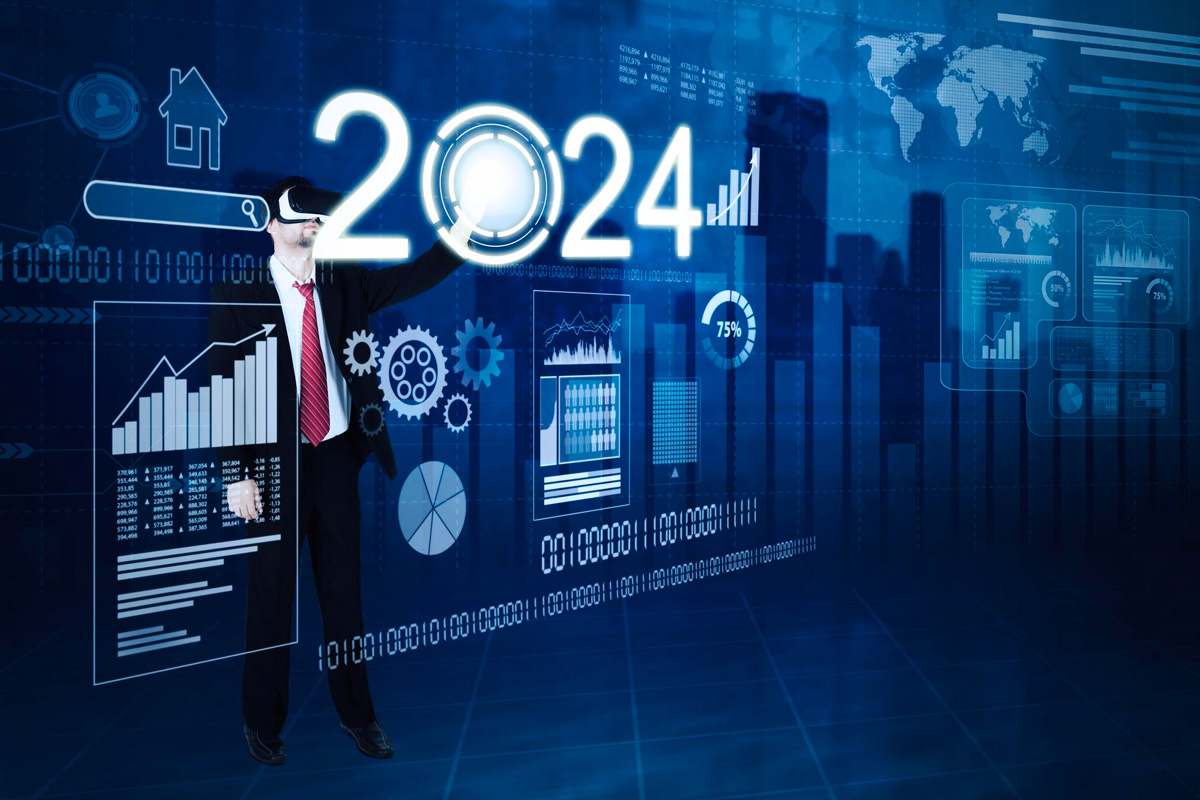As we move into 2024, the field of data science continues to evolve rapidly, driven by advancements in technology and the growing importance of data-driven decision-making in businesses. Staying updated with the latest trends is crucial for organizations looking to leverage data science to its fullest potential. Here are the top data science trends to watch in 2024.
1. AI-Driven Automation
Automation powered by artificial intelligence (AI) is transforming how businesses operate. In 2024, we can expect to see even more sophisticated AI algorithms automating complex tasks that were previously the domain of human experts. From predictive analytics to automated machine learning (AutoML), AI-driven automation will help organizations streamline operations, reduce costs, and enhance productivity.
2. Explainable AI (XAI)
As AI systems become more integrated into critical decision-making processes, the need for transparency and interpretability has never been greater. Explainable AI (XAI) aims to make AI systems’ decision-making processes understandable to humans. In 2024, there will be a significant push towards developing and implementing XAI frameworks to ensure that AI models are not only accurate but also transparent and fair.
3. Edge Computing
With the proliferation of IoT devices and the need for real-time data processing, edge computing is gaining traction. Edge computing involves processing data closer to its source, reducing latency and bandwidth usage. In 2024, we will see increased adoption of edge computing in data science applications, enabling faster and more efficient data processing and analysis.
4. DataOps and MLOps
DataOps (Data Operations) and MLOps (Machine Learning Operations) are methodologies that streamline the entire data and machine learning lifecycle. These practices emphasize collaboration, automation, and continuous delivery, ensuring that data and models are managed efficiently. In 2024, more organizations will adopt DataOps and MLOps to improve their data pipelines, enhance model deployment, and ensure scalability.
5. Augmented Analytics
Augmented analytics leverages AI and machine learning to enhance data preparation, analysis, and visualization. This trend focuses on making analytics more accessible to business users, enabling them to gain insights without requiring deep technical expertise. In 2024, augmented analytics will continue to democratize data science, empowering more people within organizations to make data-driven decisions.
6. Synthetic Data
As data privacy concerns and regulations grow, synthetic data is becoming a valuable tool for data scientists. Synthetic data is artificially generated data that mimics real-world data without compromising privacy. In 2024, we will see a rise in the use of synthetic data for training machine learning models, testing algorithms, and ensuring compliance with data protection regulations.
7. Responsible AI and Ethics
The ethical implications of AI and data science are increasingly coming under scrutiny. Responsible AI involves developing and deploying AI systems that are ethical, fair, and unbiased. In 2024, there will be a stronger emphasis on incorporating ethical considerations into data science practices, including bias detection, fairness metrics, and robust governance frameworks.
8. Graph Analytics
Graph analytics involves analyzing relationships between entities, which is crucial for applications like social network analysis, fraud detection, and recommendation systems. In 2024, graph analytics will become more prominent as organizations recognize the value of understanding complex relationships within their data.
9. Natural Language Processing (NLP) Advancements
Natural Language Processing (NLP) continues to make strides, enabling machines to understand and interact with human language. In 2024, advancements in NLP will lead to more sophisticated chatbots, sentiment analysis tools, and language translation services. These developments will enhance customer service, market analysis, and communication capabilities.
10. Federated Learning
Federated learning is a distributed approach to training machine learning models that allows data to remain on local devices while only sharing model updates. This approach addresses privacy concerns and reduces the need for centralized data storage. In 2024, federated learning will gain traction, especially in industries where data privacy is paramount, such as healthcare and finance.
Conclusion
The landscape of data science is continually evolving, with new trends and technologies emerging each year. In 2024, AI-driven automation, explainable AI, edge computing, and other trends will shape how organizations leverage data science to drive innovation and growth. By staying informed about these trends, businesses can better position themselves to harness the power of data science and stay ahead in an increasingly competitive landscape.




